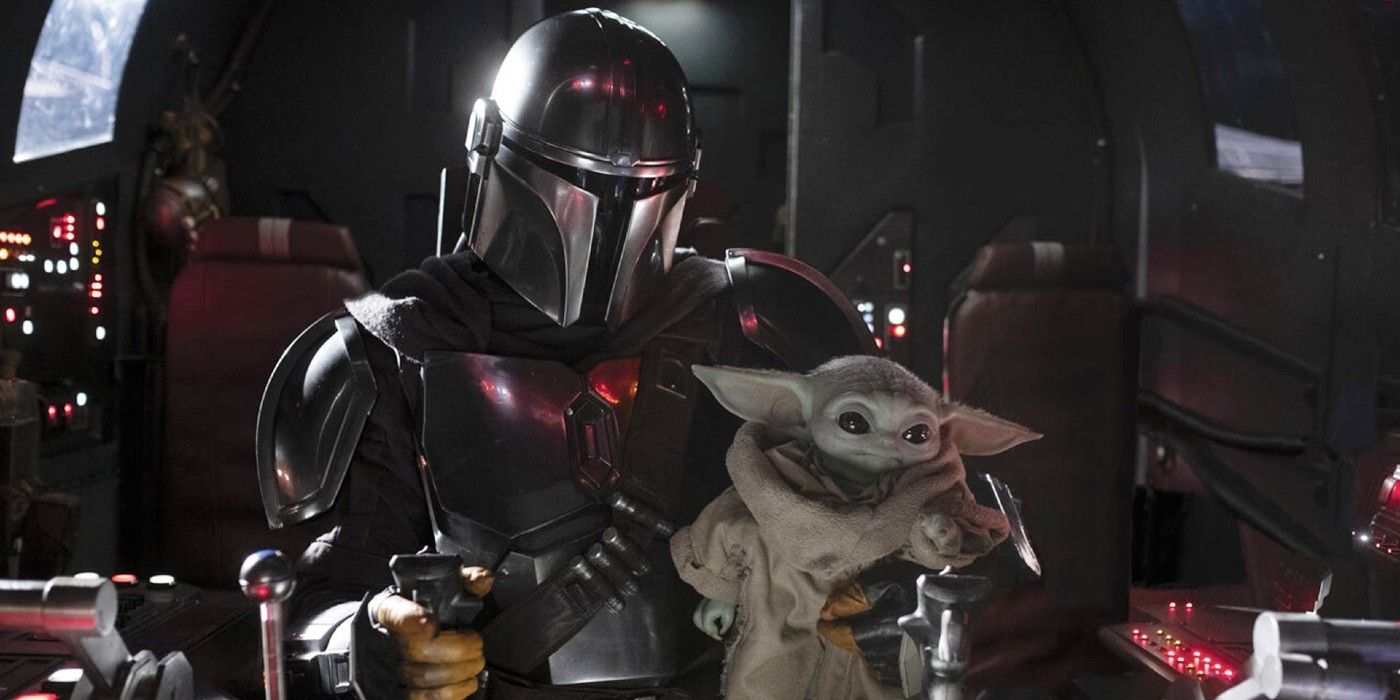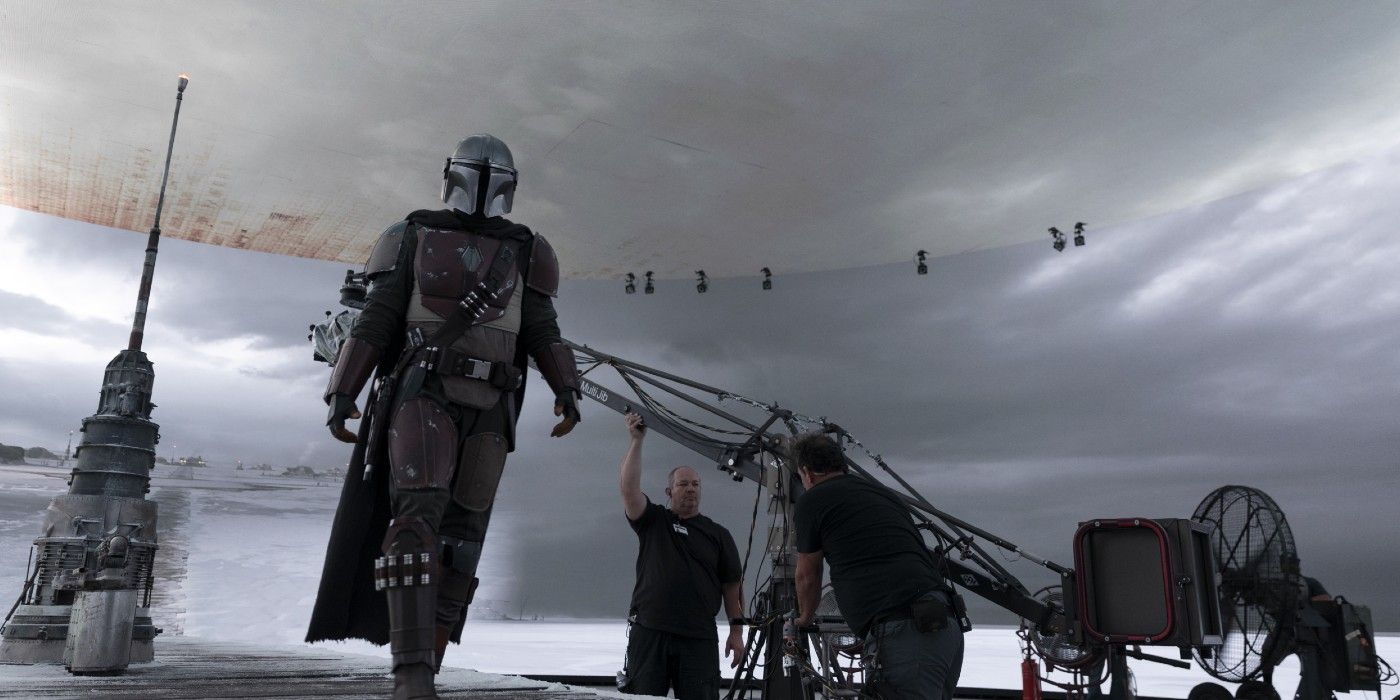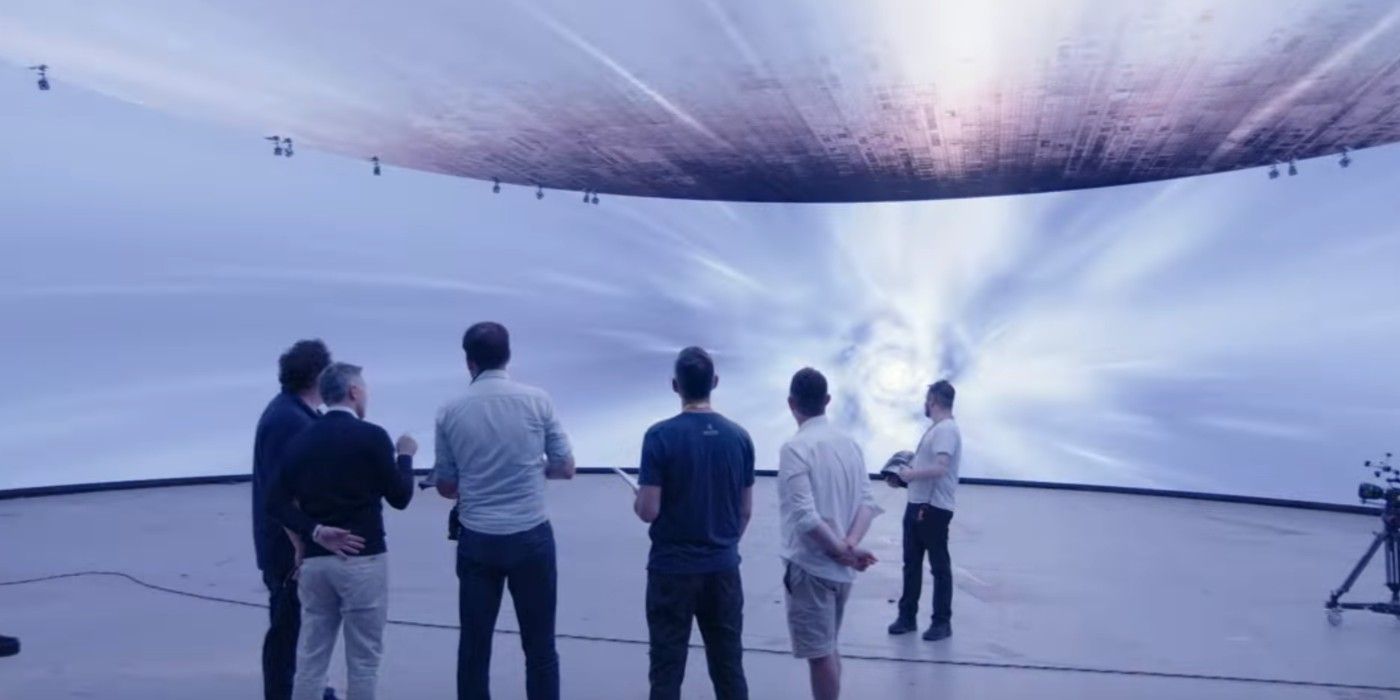By now, pretty much any casual television viewer has seen, or at least knows about, The Mandalorian. It's the latest, greatest entry into the Star Wars universe that seems to have been both a huge financial success for Disney and almost universally beloved by audiences. The show immediately spawned countless memes, viral images, and adoring praise for 'The Child,' who was quickly dubbed "Baby Yoda" by fans, but the show was also a satisfying sci-fi romp through the Star Wars universe with all the action one would expect from a show about a bounty hunter. The Mandalorian was a big win for Disney, breaking new ground for both Star Wars and Disney+.
Lesser known, however, is the fact that the show was also breaking new ground during its production. During filming, the actors and crew were utilizing some cutting edge technology meant to make filming off-set easier than ever before. With the touch of a button, the actors could be transported to all the locales of the Star Wars universe at light speed. The Mandalorian and The Child could stand and admire the harsh sands of Arvala-7, or take shelter in the village on Sorgan, all without ever leaving the comfort of a film set. How is this possible? Well it's all thanks to some impressive LED tech, and Epic Games.
Let's get right to the point: The Mandalorian was filmed with the actors surrounded by a huge LED screen that wraps 270 degrees around the set. This, by itself, is already pretty impressive. One only needs to see one picture of the setup to get a sense of how large this device is, and how much work must have gone into creating it. What's even more interesting however, is what this screen allows the director and actors to do. The screen is capable of displaying a complete digital environment, rendered by Unreal Engine. Instead of standing around in front of green screens, this means the actors can actually see and experience the world their characters are meant to inhabit.
There's even more going on under the surface though. Unreal Engine is making this all happen in real time, which means that not only can the environment be displayed, it can actually be edited and changed on a whim. Anything can be tweaked or changed in favor of getting a better shot or fixing some distracting element. Best of all, the screen features pixel-accurate tracking and perspective shifting, meaning that the director can move the camera anywhere they want and not worry about the world behind the actors becoming flat or confusing.
This wasn't an easy thing to put together. According to Industrial Light and Magic, which spearheaded the technology, it required the collaboration of themselves, Epic Games, Fuse, Lux Machina, Profile Studios, NVIDIA, and ARRI to make it happen. All that investment paid off in a big way though, as The Mandalorian was able to shoot nearly half of Season 1 taking advantage of the technology, and practically eliminated the need for any location shoots.
The potential of this technology is fairly self-evident. It gives cast and crew the ability to blend digital worlds and real actors better than ever before. Being able to see the actors moving around in the digital scenes allows for more flexibility and fine-tuning on the director's part, while also giving the actors so much more to work with in terms of understanding the physical space they will be in. While discussing the technology, Richard Bluff, who was the VFX supervisor on The Mandalorian, explained that the sets "are indistinguishable from their physical counterparts while incorporating physical set pieces and props as needed for interaction. It’s truly a game-changer."
How this technology makes its way to other studios and projects has yet to be seen. While it obviously has enormous potential, it's also a huge investment, and not practical for every show. That said, it could open up whole new worlds in the production of TV and films, allowing for projects to be made with more ambition, and greater finesse. Game engineer and technical lead at Epic Games, Jeff Harris, put it best when he wrote "what's even more exciting is that the techniques and technology we developed on The Mandalorian are only the tip of the iceberg – I can’t wait to see what the future has in store."



